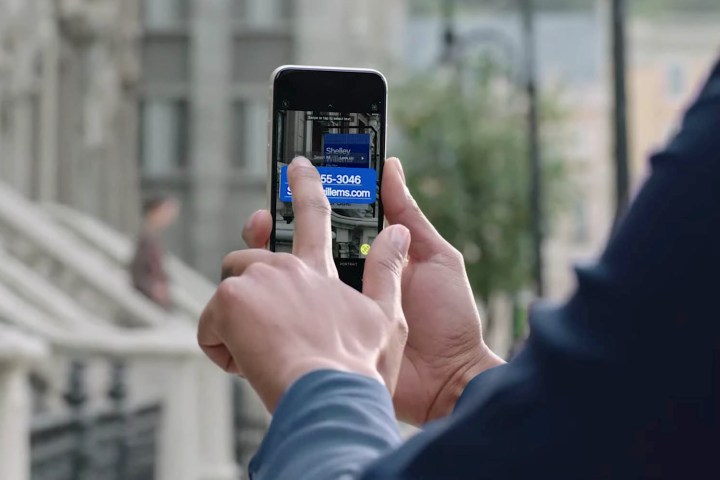The iPhone SE (2022) is more expensive than the iPhone SE (2020), and there’s a chance some may see this as a reason to knock Apple, or deem the cheapest brand-new iPhone as less of a bargain offering than before. In reality, it’s the opposite. Yes, the price has increased by $30, but you get a whole lot more than $30 worth of value in the new iPhone SE.
Value-driven features
Launched during Apple’s Peek Performance spring event, the two big new features in the iPhone SE (2022) are the A15 Bionic processor and the addition of 5G connectivity. Launched today, with pre-orders starting Friday, the new SE has the same chip as the iPhone 13, which starts at $799. It has a six-core Central Processor Unit (CPU), and a four-core Graphics Processing Unit (GPU), plus a 16-core Neural Engine. All this means more speed, more power, more multitasking ability, and crucially, more longevity.

The A15 Bionic also adds more computational photography features to the camera, making it more fun to use, and potentially longer battery life due to increased efficiency. Longevity is also the big benefit of the new 5G modem. Not everyone will want or even be able to use 5G right now, but that will change. Having 5G as an option means you may not have to upgrade your phone as soon as you would a phone without it.
The longevity advantages also apply to the software. It launches with iOS 15 on board, just like the more expensive models, and you can reasonably expect four or five years of software support from Apple. The company didn’t actually give a time frame, saying simply it’ll be supported for “years to come,” but considering the 2016 first-generation iPhone SE runs iOS 15, you can expect the new model to still be up to date in 2025 and beyond.
All this represents good value, the cornerstone of the iPhone SE. Of course, it would be an even better value if it still cost $399, but Apple has to move with the times. Considering Apple increased the price of the iPhone 13 over the iPhone 12 by $100, and it still did so while not including a charger or EarPods in the box, the $30 extra here doesn’t seem outrageous.
But what about the design?
No, the design isn’t new. It’s technically from 2017 as it’s based on the iPhone 8, and it even shares the same 4.7-inch Retina HD screen. But it also shares the same Touch ID fingerprint sensor, which is as much of an iPhone SE cornerstone as the reasonable price tag. Apple refers to the look of the iPhone SE as “classic,” which if you’re feeling uncharitable, you could replace with “old,” but it appears that doesn’t matter to eager buyers.

Looking back at various sales reports over the past couple of years, the iPhone SE (2020) has been a winner for Apple. In 2020, Apple shipped more than 24 million second-generation iPhone SE models, making it the company’s second bestseller behind the iPhone 11, according to research company Omdia. It was also successful in China, and Apple CEO Tim Cook hinted in mid-2021 that it had helped bolster sales in India, too.
Repeating an already successful (twice!) design again makes sense, and it also means Apple didn’t pass additional development costs along to us, which it would have done if it had reworked another iPhone design for the third-generation model. The extra $30 cost of the iPhone SE (2022) is all about the processor and the modem. Apple’s partners can make the case easily and cheaply, and we’re being saved from the new model costing $450 or more just so it can look a bit different.
What about the competition?
The iPhone SE (2022) is a good value, but is that only in Apple’s world? The Google Pixel 5a 5G costs $449, and although it has a bigger screen, it does not share the Tensor processor from the new Pixel 6 and Pixel 6 Pro. To get the Pixel 6, you’ll have to spend $599. You do get Google’s excellent camera, but the iPhone SE has a better design. The Samsung Galaxy A52 5G launched at $499, but can be found for $399 right now, yet it also has a midrange processor inside.

Both the Pixel and Galaxy phones are good buys, and just like all Android phones, they do offer more features than the iPhone, but if you prioritize performance over screen refresh rates or cameras, then the iPhone SE (2022) is the best equipped of the bunch. Again, we come back to value. Think of the third-generation SE as the equivalent of Google putting the Qualcomm Snapdragon 8 Gen 1 chip inside a Pixel 4a, and still charging $399 for it.
No one wants the cost of products to rise, but to give Apple its due, it has managed to hold back on too many major price increases recently. While the iPhone 13 and 13 Mini did go up, the iPhone 13 Pro and 13 Pro Max cost the same as the iPhone 12 Pro and 12 Pro Max, and the Apple Watch Series 7 starts at $399, just like the Series 6. The iPhone SE (2022) is going to last you for years, and paying an extra $30 over the model launched two years ago is not a big deal considering what’s inside.



